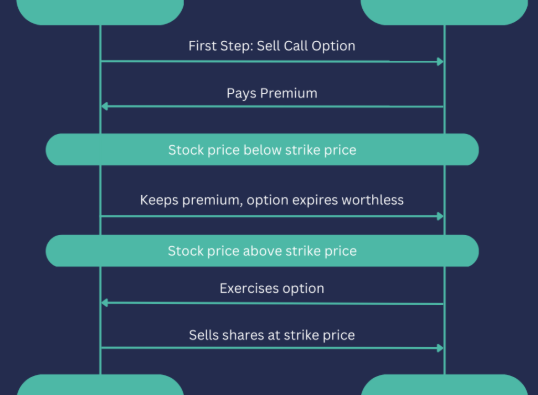
FinNifty, introduced in January 2021 on the National Stock Exchange (NSE), represents the performance of key financial institutions in India. This index is an essential tool for tracking how different sectors within the Indian financial market are performing. It includes a wide range of institutions such as corporate banks, non-banking financial companies (NBFCs), housing finance companies, and insurance firms.
Key Features of FinNifty
One of the core characteristics of FinNifty is its focus on the financial sector, where banks hold a significant portion of the index. Specifically, banks account for over 65% of the index, with the remaining portion representing other financial entities like insurance companies and NBFCs. This makes FinNifty a crucial benchmark for anyone looking to invest or trade in the financial services industry.
The value of FinNifty rises or falls depending on the overall performance of these financial sectors. If investor confidence in the financial sector strengthens, the index tends to increase in value. This makes FinNifty an excellent tool for gauging the overall health of India’s financial market and an ideal choice for those looking to invest in financial services.
Understanding FinNifty in Detail
FinNifty is composed of up to 20 stocks, all selected based on their market capitalization, with the weighting of each stock determined by its free float market capitalization. The calculation for this is straightforward:
Free-Float Market Capitalization = Outstanding Shares x Price x Investible Weight Factor (IWF)
IWF plays a vital role in ensuring that the weightage of stocks in the index reflects their actual impact in the market. It’s important to note that when a company’s shares are publicly listed, its IWF is usually higher.
Highlights of the FinNifty Index
- Base Date: January 2021
- Base Value: 1000
- Constituents: The index includes 20 stocks from the financial sector, mainly banks, insurance firms, NBFCs, and housing finance companies.
- Semi-annual Reconstitution: The FinNifty index is updated every six months to reflect any changes in the financial landscape.
- Buffering Mechanism: To reduce turnover, the index uses a buffer based on free float market capitalization to determine stock weightage.
FinNifty’s Stocks and Their Weightage
The stocks in the FinNifty index are weighted based on their free float market capitalization. For example, as of the latest update, HDFC Bank has the highest weightage at 23.64%, followed by ICICI Bank at 20%. Other notable stocks include HDFC, Kotak Mahindra Bank, and Axis Bank.
Here’s a look at some of the top stocks in the FinNifty index and their respective weightage:
- HDFC Bank Ltd. – 23.64%
- ICICI Bank Ltd. – 20%
- HDFC – 15.78%
- Kotak Mahindra Bank Ltd. – 8.41%
- Axis Bank Ltd. – 7.66%
These figures are subject to change based on the evolving market conditions.
Understanding the Derivative Settlement Days
FinNifty derivatives are settled either weekly or monthly, with cash payments. The expiry date for monthly settlements is the last Tuesday of each month, while weekly settlements expire every Tuesday. In case of holidays, the settlement is moved to the previous trading day.
Key Sectors Represented in FinNifty
The banking sector forms the bulk of FinNifty, making up more than 65% of the index. Within this sector, major players like HDFC, ICICI, and Kotak Mahindra banks dominate the market share. In addition to banks, the index also includes life insurance companies like SBI Life Insurance and HDFC Life Insurance, along with companies from the housing finance sector such as Bajaj Finance and Piramal Enterprises.
How to Invest in the FinNifty Index
While you cannot directly buy stocks from the FinNifty index, you can invest in mutual funds or options that track the performance of the index. These financial instruments replicate the stock weightage of FinNifty, allowing investors to indirectly gain exposure to the index.
For those who have an online or offline trading account, trading options based on the FinNifty derivatives is a viable strategy. Make sure to activate the segment required for trading options before proceeding.
Why You Should Consider Investing in FinNifty
There are several compelling reasons to consider investing in FinNifty:
- Diversification: FinNifty helps spread out risks by offering exposure to a broad range of financial institutions. This can reduce the impact of any single company’s poor performance on your portfolio.
- Sector-Based Strategy: If you’re optimistic about the future of the financial sector, FinNifty provides an excellent benchmark to align your investments with this sector’s growth potential.
- Strong Performance: Since its launch, FinNifty has shown strong returns, outperforming other indices like Nifty 50. The index has yielded annual returns of 17.54%, compared to 11% for Nifty 50 and 18.85% for the Nifty Bank Index.
FinNifty vs. Nifty 50: The Key Differences
Although FinNifty and Nifty 50 are often compared, they have distinct differences:
- Constituents: FinNifty is largely composed of financial stocks, while Nifty 50 represents a broader spectrum of industries.
- Weightage: Many of the top companies in FinNifty are also part of the Nifty 50, with the former showing more volatility due to its financial sector concentration.
- Risk-Reward Ratio: FinNifty has a slightly higher risk-reward ratio than Nifty 50, making it more suitable for investors willing to accept higher volatility for potentially greater returns.
Conclusion
FinNifty is a valuable tool for anyone looking to gain insights into the performance of the Indian financial sector. By offering a diversified exposure to major banks, insurance firms, and NBFCs, it provides a unique opportunity for investors. The index has demonstrated robust returns since its inception, making it an attractive option for those who want to tap into the financial sector’s growth.
Whether you’re an experienced investor or just getting started, understanding FinNifty can help you make more informed decisions about your portfolio. By diversifying your investments and leveraging sector-based strategies, you can better position yourself for success in the evolving financial landscape.









